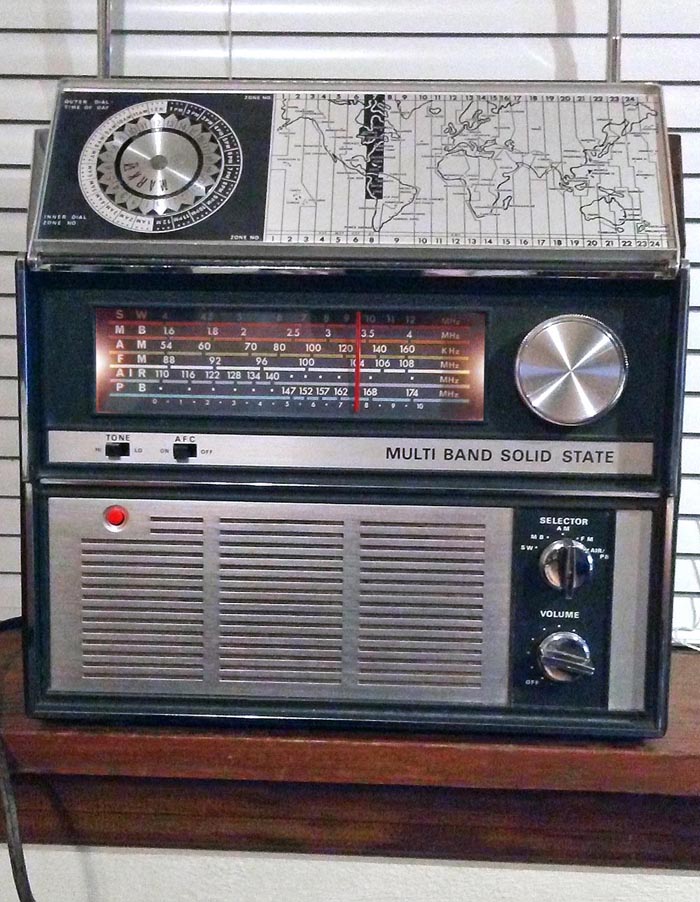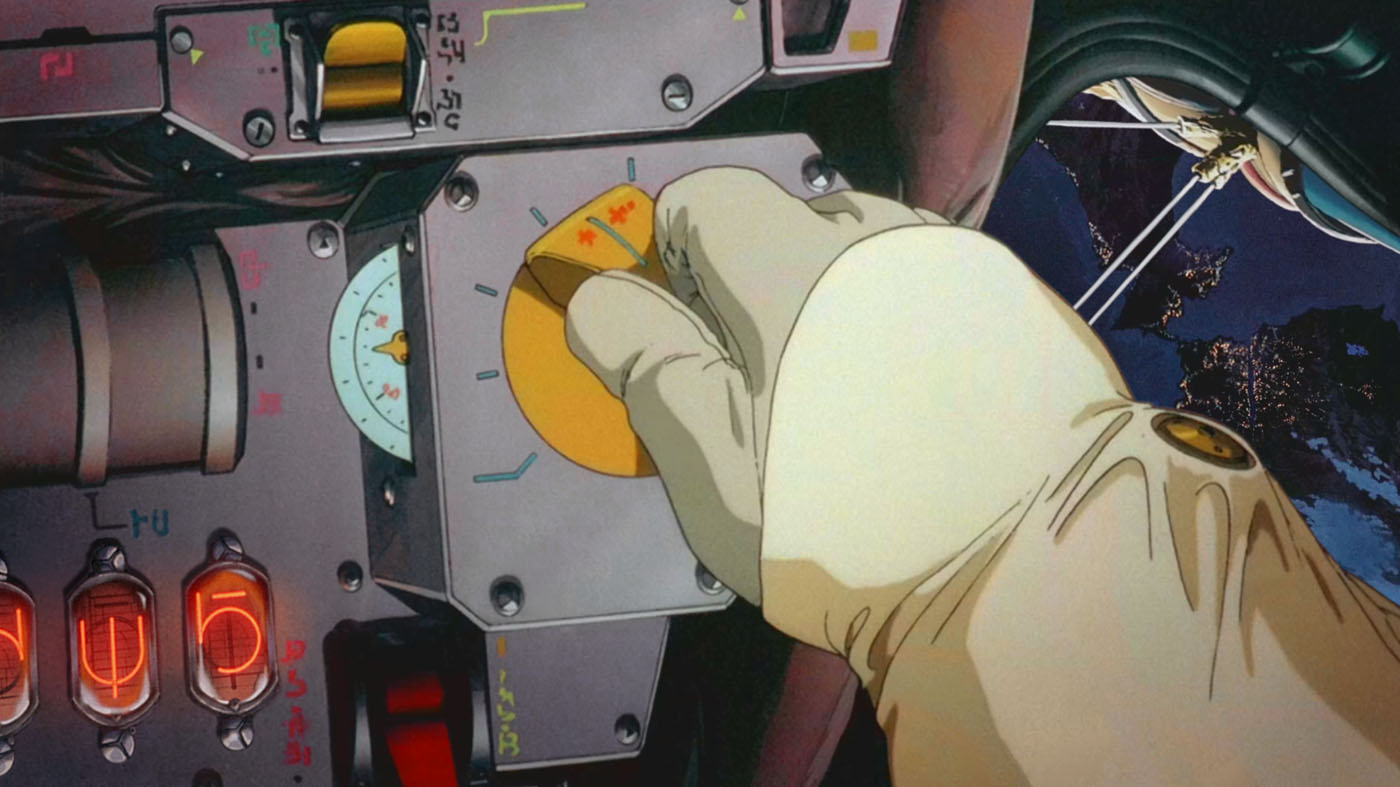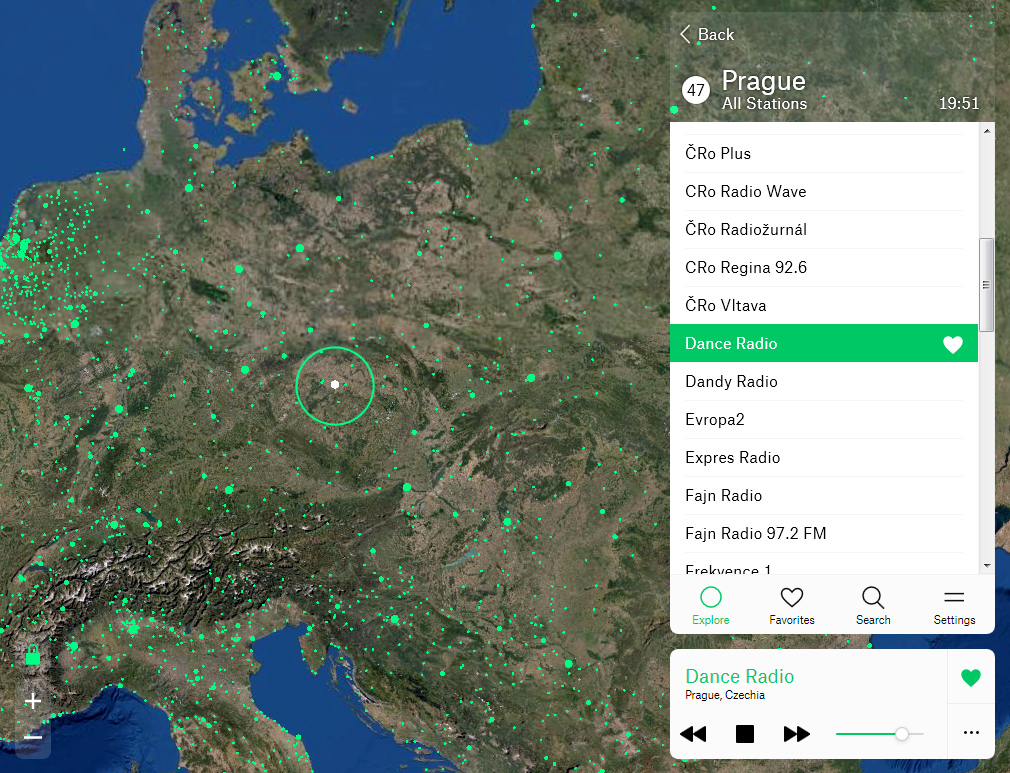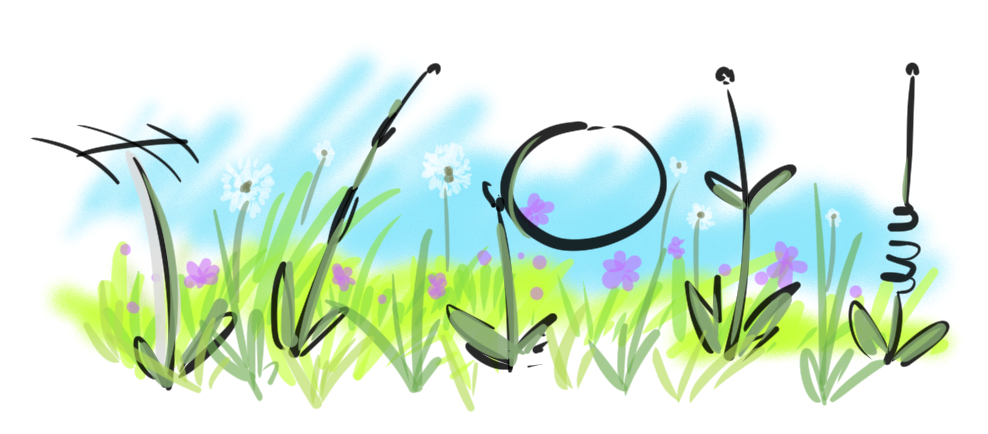| Harvest Your Radio Garden By Mike Maynard, K4ICY As published in The Printed Circuit - Newsletter of the Tallahassee Amateur Radio Society [February 2017, Page 13] - Updated July, 2020. [Crackling static noise] ...Ping...ping...ping..."Heading, zero, niner, four"...ping. I awoke one night to these strange sounds emanating from the adjacent living room. I was only eight years old, it was three in the morning and my seven year old brother had grandma's multi-band receiver on the floor blaring away, beckoning me to join in on his contraband discovery. We obviously weren't supposed to be up that late, let alone messing with this cool-looking rig with its spinning time-zone disc, light up multi-band dial and selector knob pointing to icon symbols including a football, sea ship and cop car [the photo below shows a receiver I own that is closely related.] What were we hearing? It wasn't a broadcast station, or that one that counted the time. This one appeared to us to be some genuine submariners on a maneuver. To our kid ears it seemed mysterious and forbidden, like we were eavesdropping on the military. I can't say for sure if that's what it really was but it seemed to go on for a while and it definitely piqued our interests.
That chance audio encounter and subsequent inheritance of that special transistorized marvel would foster my continued love for radio and eventual interest in the Amateur Radio hobby. Shortwave radio, or in other words; the enjoyment of listening to radio signals from other parts of the world, no doubt was the catalyzing pastime of a mass of our Hams. I'm sure many of you recall 'DXing' distance stations every night on AM transistor radios just the same, or maybe it was a relative's CB rig with all its slang-rich southern-drawl and heterodyne whines. And did you own a pair of kid's walkie-talkie's? Ever listen intently to the static to see if anyone else out there had them too? No matter where you did your globe trotting, you're most likely reading this article because you too made your way to the Ham bands via the world bands. I suppose it takes a certain personality to really dig the shortwave thing. Within an SWL(Short Wave Listener) lies at least some small thirst for the adventure of exploring the unknown. Tuning through the world band dial is a blind affair as the bounty to be uncovered is random and unpredictable in nature and exponentially affected by the permutations of time of day, day of the year, frequency, programming schedule and most of all, propagation. Image one's self being air-dropped into a strange land, where stranger customs and languages abound. There might be immobilizing feelings of disorientation and fear, but it's inevitably overridden by a certain exhilaration and intrigue as you adapt to your surroundings. In the classic fictional Japanese anime film, "Royal Space Force: The Wings of Honn�amise" [Gainax/Bandai Visual, 1987,] the main character Shirotsugh, faces the challenges of being the first human to try to go into space. Amidst the complexities and anxieties of launching a mostly untested rocket and capsule design into orbit, nearly being killed by a warring rival nation on the launch pad, once aloft, he takes a moment to marvel at the earth below through his window and notes, "City lights... I wonder where they are? They really do look like stars." He then takes a moment more to tune through his broadcast receiver, sampling the tastes of the international radio banquet below. It must have surely captured his mind's attentions from everything else. I'd like to note an interesting point; the view of this astronaut's world was missing one thing; the same thing missing from your shortwave's radio dial: borders. For those of you not born in this century, you may have noticed a difference in what you hear (or lack thereof) on the shortwave bands than when you were younger. I'll speak more on this fact in a bit, but how this change came about is this: you guessed it, the Internet. As more and more foreign countries choose to use the Internet as their medium for international outreach, the less and less broadcast stations there seems to be available for SWL's to catch on the air. Some of the 'big guns' remain, but unless you're into domestic religious televangelism, the rare and small exotic fishes of the radio sea have pretty much thinned out. If there is some redemptive Internet influence on the shortwaves, instead of having to thumb through outdated copies of Passport to World Band Radio or praying to the ionosphere gods for manna, these days there are a few sites to aid in a desperate SWL’er’s search. Two great sites to check out are: http://www.short-wave.info/ and http://shortwave.hfradio.org/ where you can find current frequency and time listings and other great resources. Enter the Garden
An interesting web site and Android app recently
sprung up a few years ago which allow users to spin a virtual globe,
clicking on representative green dots which spawn live
Internet-streaming radio stations from around the world. The
site's designer, Jonathan Puckey, in collaboration with the Netherlands
Institute for Sound and Vision, was working a research project for a
museum installation called Transnational Radio Encounters, intended to
teach the concept that radio crosses borders while exhibiting radio of
different languages. Puckey states, "Like, radio itself, of
course, doesn't know about borders. It's a signal that travels as
far as the signal strength goes." The genius came when they
decided to make the project a website instead of an installation.
Check it out now at:
The app may
occasionally have a few bugs to be worked out but thousands of users
are now enjoying a quirky new way to explore the world of radio.
"New" to many and it lacks the organization an instant
commercially-driven gratification of your big-time radio apps, but the
concept should seem very familiar to seasoned SWL'ers. Now, these
other Internet services still reign supreme, such as ShoutCast with its
[50,000+] online stations. iHeart Radio and TuneIn are the most
popular smartphone live radio apps and many have switched to
jukebox-style apps including the likes of Spotify, but
despite the ample selection, to me, there are some major
drawbacks; including restrictions on listening to some stations based
on payment system and clumsy navigation systems based on genre and
popularity ratings. Radio Garden is still a diamond in the rough
at this point, but where it lacks in selection it makes up for in fun
and experience - you are the astronaut who can pluck the fruits of
radio from anywhere you orbit.
Internet "killed the radio star"... The lines of what "real" radio is
have been blurring for over two decades. Radio [and even
consumable audio media] is not what it used to be, especially on the
world bands. There are less stations of Meaningful and insightful
content and many countries cannot rightly justify the capital
expenditure required to erect and maintain a million-watt shortwave
transmission site, not to mention the studios and contributing news
agencies. It makes more fiscal sense to switch over to the
now-preferred and superior-audio-quality format of what the vast
majority of listeners are actually using [and have been for a while,]
in particular, smartphones and satellite radio.
Updated
07/10/20
|




